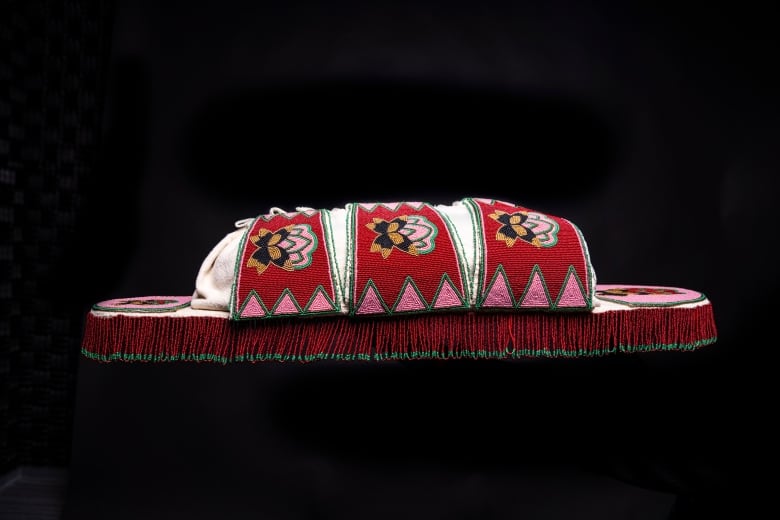Canadian Museum for Human Rights opens exhibit on Indian Act
'It's the government still having full control over their lands and ... their whole lives'

A new exhibit at the Canadian Museum for Human Rights in Winnipeg looks at the effects the Indian Act has had on Indigenous Peoples.
"The Indian Act has tried to interfere in all of these different structures and communities for over a hundred years while Indigenous people and communities have had their own traditions and values related to land governance and education for thousands of years," said Karine Duhamel, the museum'scurator for Indigenous rights.
Duhamel worked with First Nations Elders and advisors to create the exhibit.
The Indian Actwas created in 1876, and governs matters related to status Indiansand reserves.
DanaSoonias and SharonMcLeodare bothCMHRadvisors, and helped to co-curate the exhibit.
"In terms of identity, the Indian Act was the first piece of legislation in Canada that defined who Aboriginal people were," saidMcLeod.
"In modern times, it seems to be an archaic legislation based on race."
'It's the government still having full control'
Soonias said he hopes the exhibit sparks discussion aboutwhat the original intent of treaties wereand what they are today.
"[The Indian Act] is definitely a restriction on our people, and it's the government still having full control over their lands and their resources and their elections, their whole lives and everything."
AlthoughSooniaswould like to see the Indian Act gone, he said he understands the complexity of removing the legislation.
"I think there is an opportunity for the government to make some changes that are real and to do that, you need to have the Indigenous people, our First Nations people, at the table.
"That's the only way it can happen is to have a nation-to-nation type dialogue."
Displays includeart
The exhibit featuresa set of replicahandwritten 1880 amendments tothe Indian Act. It also includes a wampum belt made by Onondagaartist KenMaracleand a moderncradleboardmade by Cree artist MarciaChickeness.
The moderncradleboardis displayed beside atoycradleboardfrom the late 1800s.

Thecradleboardis meant to illustrate Indigenous education prior to Indigenous children being forced into residential schools via the Indian Act.
"So you have this historical example of children learning about their own traditions and values through something like acradleboardand then a really modern and beautiful example of a cradle board," saidDuhamel.
Also on display arefeathers, including one that was owned by Elijah Harper. In 1990, Harper used an eagle feather as a symbol of strengthwhen he blocked theMeechLake Accord, citing a lack of First Nations consultation to the proposed constitutional amendments.
The exhibit opensWednesday. Admission to the CanadianMuseum for Human Rights is freefor Indigenous Peoples.













_(720p).jpg)


 OFFICIAL HD MUSIC VIDEO.jpg)
.jpg)



























































































